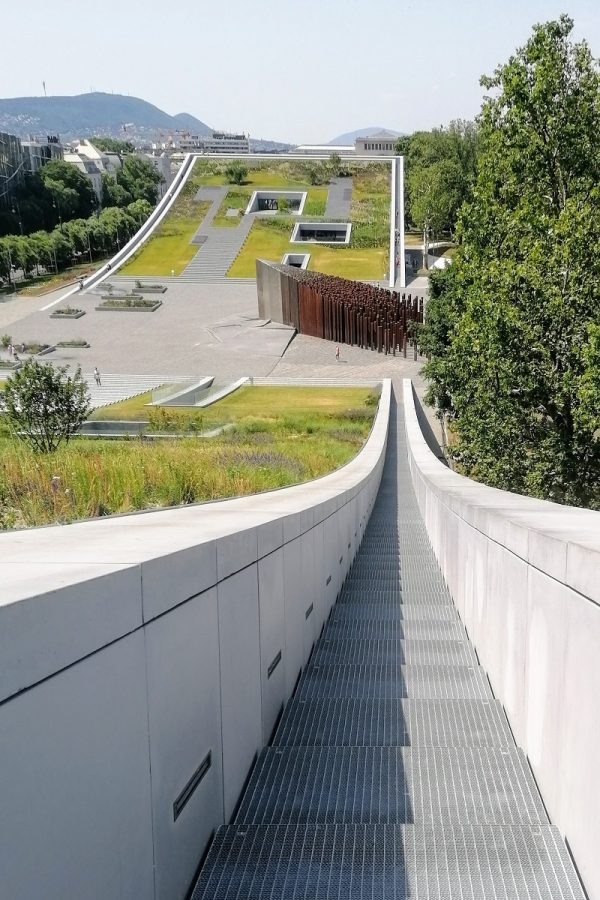The new gateway to the park

Napur architect’s Museum of Ethnography creates a new entrance situation at the Budapest City Park, but also responds to the location at the park and the history of the place.
For most people in Budapest, the way to the Liget City Park is via the famous, dead straight Andrássy Street. But it is not Andrássy Street at all, but the axis Király Street – Városligeti Avenue that is the traditional route from the medieval city centre to the over 200 years old park. Originally, the path led into the circular rondeau surrounded by three rows of trees and a small gate building that was not realised at the time.
This is exactly what the idea creators of the Liget project picked up on when they proposed two museum buildings, one for photography and one for architecture, as the end point of Városligeti Avenue to create a gateway situation. In a first competition round in 2011, two cube shaped buildings came closest to convincing the jury. After a concept modification, the Museum of Ethnography was given its location here and a second competition was held in May 2016, which was won by the Budapest based studio of Napur architect led by Marcel Ferencz. The gesture of an inverted gate motif convinced the jury the most: the historical axis finally found its worthy conclusion, equal and formally related to the semicircle of the kings at the nearby Heroes’ Square.

Museum of Ethnography Budapest – the entire roof of the museum can be walked on. Photo by: ©Arne Hübner
The end of the parade ground
The site of the museum was for a long time a place of non-park use. The Regnum Marianum church was built here in 1931, but 20 years later it had to make way for a parade ground including a monument to Stalin. The Stalin monument disappeared after the 1956 Revolution, but the grandstand and 12 hectares of treeless space remained for three more decades. It is only 50 years later that the 1956 Revolution Monument is unveiled on the very spot where the insurgents knocked the Stalin monument off its pedestal.

Workers march past the Stalin monument in the 1950s. Photo by: ©Fortepan
If the visitor marches up to the green, curved museum roof today, the path ends practically in nothingness. Instead, you reach the eaves height of the neighbouring buildings and marvel at new city views all the way to the Buda Hills. The distinctive feature of the Museum of Ethnography is not only the elongated arch shape, but also the metal ornaments on its facade. It seems as if someone had pushed up layers of soil, revealing half a million metallic pixels instead of grains of soil, quoting decorations of various exhibits in the museum.

Museum of Ethnography Budapest – the entire roof of the museum can be walked on. Photo by: ©Arne Hübner
Patterns of vases, baskets, hats or blankets were abstracted to such an extent that they could convey a contemporary image of the contents of the museum building to the outside.

Museum of Ethnography Budapest – the public passage inside follows the shape of the building’s arches. Photo by: ©Arne Hübner
The inner promenade also has a small sensation in store: the city model “Budapest 1910”. At the end of an architectural tour, the eye can retrace the route from the city centre via Király or Andrássy Street to the City Park, and what the park might have looked like 110 years ago without the new museum buildings.
Text by: Arne Hübner, GA Budapest
https://napur.hu/en/munkak/neprajzi-muzeum-atadas/
https://ligetbudapest.hu/en/renewed-varosliget/museum-of-ethnography
https://neprajz.hu/en/






No Comments